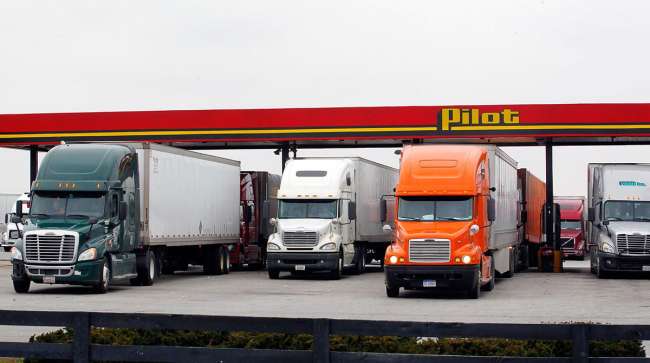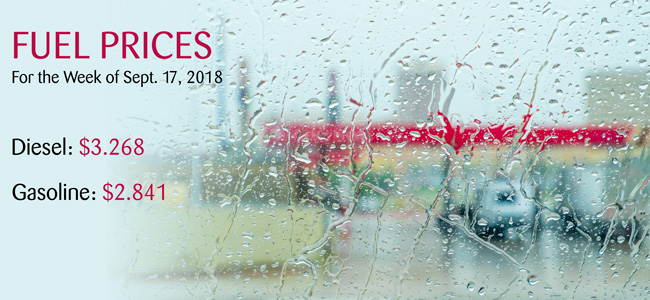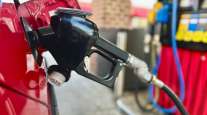Senior Reporter
Diesel, Gas Prices Creep Upward

The nationwide average price of diesel increased by a penny to $3.268 a gallon, the Department of Energy reported Sept. 17.
Trucking’s main fuel costs 47.7 cents a gallon more than it did a year ago, when the price was $2.791.
It appears that Hurricane Florence has had little impact on the price of diesel or gasoline as the storm, while causing widespread flooding in North Carolina, did not track into the Gulf Coast, where many of the nation’s oil processors have refineries.

Ebliss
The average price of diesel rose in all regions but the Rocky Mountains. The most expensive price for diesel remains in California at $3.979 a gallon, up a penny from last week, while the least expensive is in the Gulf Coast at $3.056 a gallon, but that is up 1.7 cents from the previous week. And that increase was the largest among the 10 regions in the Energy Information Administration’s weekly summary.
Meanwhile, the average price for gasoline is also up nationally to $2.841, an increase of eight-tenths of a penny, and it is nearly 21 cents a gallon higher than it was a year ago when it was $2.634 a gallon.
Gasoline prices increased in seven of the nine regions of the country. The most expensive gasoline is in the West Coast region at $3.344 a gallon.
The prices of diesel and gasoline are trending upward at a time when gasoline, after Labor Day, usually begins to fall as the summer driving season levels.
Oil prices are not going down either.
“West Texas Intermediate is still near $70 a barrel. Brent is close to $80 a barrel,” Denton Cinquegrana, the chief oil analyst at the Oil Price Information Service, told Transport Topics. “Supplies of distillate appear to still be tight and with the economy doing well, distillate demand should be solid going forward. Diesel prices do not necessarily fall post-Labor Day like gasoline might, there is no specification switch like in gasoline. I think you can make an argument that because of heating oil demand you usually see diesel prices increase at this time of year.”
In Black River Falls, Wis., Millis Transfer, a family-owned trucking company with 800 vehicles, has been using a fuel optimizer for almost two years to direct its drivers where they can find the least expensive fuel during their trip. “It’s getting us the best deal on the fuel,” said the company’s fuel manager, Craig Schmidt. “The driver may only put in a certain amount of fuel to get to the next fuel stop, where the fuel is 10 cents a gallon cheaper.”
The company said by carrying less diesel on trips, it can also lighten the truck’s load and improve the fleet’s overall fuel economy. It is also encouraging its drivers to minimize the amount of time they spend idling their trucks.
Domestic crude oil production continues to increase. The EIA report estimates that U.S. crude production averaged 10.9 million barrels per day in August, up by 120,000 barrels from June.
The EIA report forecasts U.S. crude oil production will average 10.7 million barrels per day in 2018, up from 9.4 million barrels in 2017, and will average 11.5 million barrels in 2019.




